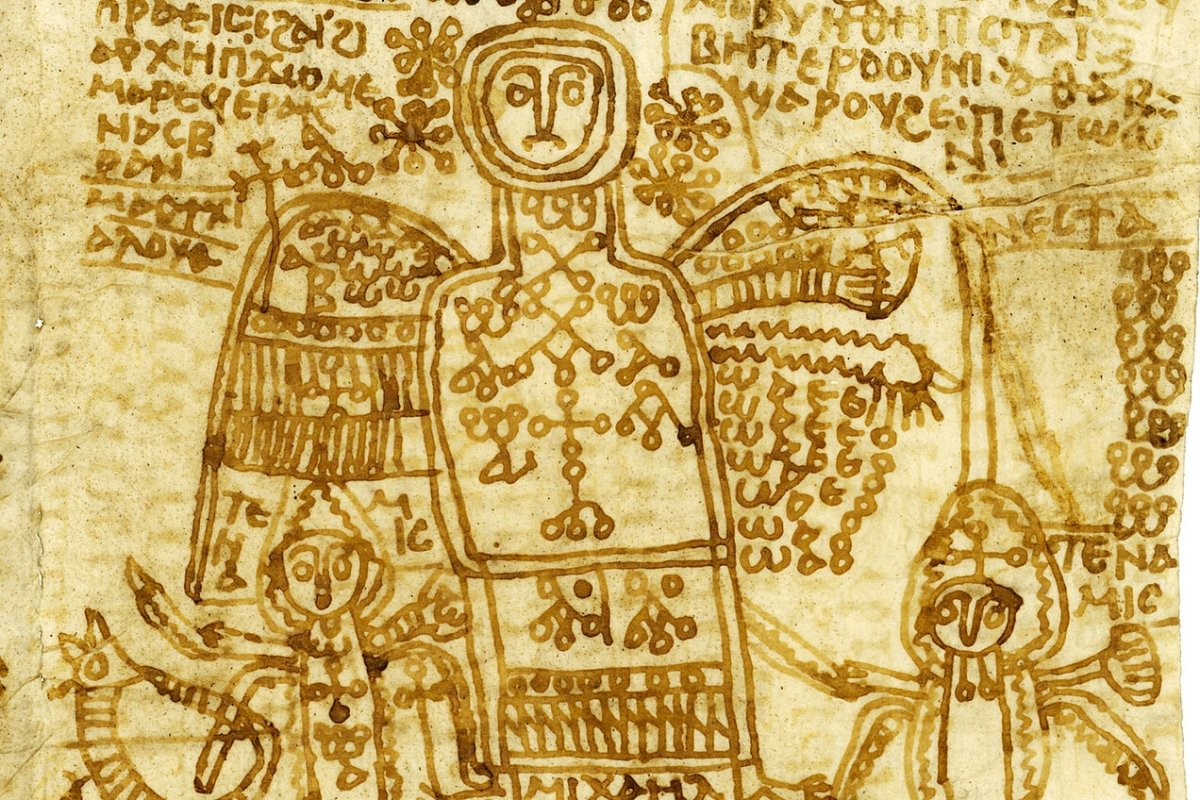Researchers have shed new light on "magical" texts created centuries ago in Egypt with the intention of bringing about changes in the lives of those who used them.
For the past five years, two scholars from the University of Würzburg in Germany have been studying a set of texts that date to between the 4th and 12th centuries A.D. The texts were written on papyrus, parchment, paper and shards of clay—known as "ostraca"—in the Coptic language.
Depending on their form and purpose, the texts may have been worn in an amulet around the neck, or secretly hidden in the house of an adversary. They were believed to have magical powers, and their intention was to bring about love or hatred, curse enemies, heal illnesses, or even provide glimpses into the future.

All of them were written in Coptic, which is the last stage in the development of the Egyptian language. Coptic was spoken in Egypt from around the 2nd century A.D., but was gradually replaced by Arabic following the Arab conquest of Egypt in the 7th century. Prior to this conquest, the Romans had ruled the country for hundreds of years.
The Coptic magical texts have now been presented in a book named, Papyri Copticae Magicae, complete with translations and contextual information.
"These texts are unique historical documents as they testify to ancient people's lived experiences: the language they spoke, the emotions they felt, the spiritual beings they turned to in moments of crisis, their social environments and the realities of everyday life," Korshi Dosoo, one of the Würzburg researchers, told Newsweek.
"By tracking historical changes in these texts—such as the use of Greek or Arabic loanwords, the change in the use of various ingredients or ritual actions over the centuries, as well as the kinds of spiritual beings evoked—can help us to understand the shifting everyday realities of ordinary ancient people through the turbulent 4th to 11th centuries in Egypt. In this period, many significant historical changes occurred in Egypt—first, a switch from traditional Egyptian religion to Christianity in the fourth and fifth centuries, and later, the Arabic conquest of Egypt in the 7th century."
Around 600 of these texts have survived, but the largest published collection to date only contains about 100 of them, according to Dosoo.
"The rest were previously scattered in numerous books and articles and were therefore only accessible and known to a few specialists," Dosoo said in a statement.
The contents of the texts can be divided into a handful of categories. For example, some were intended to protect the user from death, or demons, to appease enemies or fulfil very specific wishes.
One "contains a spell for a good singing voice, in which the user calls upon the angelic musician Hormosiel to empower a cup of wine, honey and blessed water which is drunk to impart the power to sing beautifully," Dosoo said.
In addition, spells dealing with matters of love also crop up frequently—and were seemingly used mainly by men. Some of these texts were aimed at separating married couples.
A few of the texts "contain different versions of a love spell built around a story in which the ancient Egyptian god Horus descends into the underworld and meets a beautiful woman whom he falls in love with," Dosoo said. "She does not return his affection, and so he turns to his mother Isis for help in creating a love charm."
There is also a category of texts that were intended for medicinal purposes, for example, to prevent fever, headaches or conditions like insomnia. Among these were texts believed to help the user become pregnant.
"These documents serve as an important source of information about popular religion—the reality, rather than the ideal, of religious practices and beliefs as they were lived and practiced in everyday life," Markéta Preininger Svobodova, another author of the book from Würzburg, said in the statement. "These texts give us a direct insight into people's private lives at the time; they convey their true emotions."
The transition to Christianity also left traces in the magical texts. Christianity was largely replaced by Islam in the country in the centuries following the Arab conquest, but there are still some Christians present in the country today.
"The Christianization of Egypt ended the cults of the numerous gods of the pharaonic period, but it did not end the belief in a world full of superhuman powers," Dosoo said.
The Coptic magical texts appear around the fourth century and seem to represent a tradition which continues that of the older Greek and Demotic (an earlier Egyptian script) magical papyri, which date from around the 1st century B.C. to the fifth century, according to Dosoo.
"The Greek and Demotic texts primarily call upon non-Christian deities for help: the sun god and moon goddess, Anubis, Osiris, Aphrodite and so on. By contrast, the Coptic texts primarily call upon the Christian God, his saints and angels, and more rarely, Christian demons," Dosoo said.
"This is not an absolute distinction, though; the Jewish-Christian god and his angels do appear in the older Greek and Demotic texts, and we occasionally find Greek and Egyptian deities in the Coptic texts. Nonetheless, this tendency does show the rapid and nearly complete Christianization of Egypt between the fourth and fifth centuries."
Update 2/12/24, 10:43 a.m. ET: This article has been updated with additional information.
Do you have a tip on a science story that Newsweek should be covering? Do you have a question about history? Let us know via science@newsweek.com.
Uncommon Knowledge
Newsweek is committed to challenging conventional wisdom and finding connections in the search for common ground.
Newsweek is committed to challenging conventional wisdom and finding connections in the search for common ground.
About the writer
Aristos is a Newsweek science reporter with the London, U.K., bureau. He reports on science and health topics, including; animal, ... Read more
To read how Newsweek uses AI as a newsroom tool, Click here.








